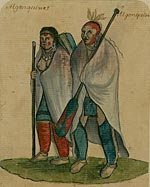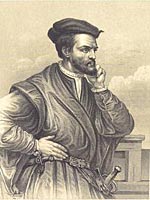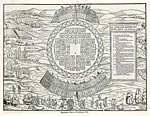

Hochelaga
In 1534, Jacques Cartier landed at Gaspé and took possession, in the name of the king of France, of a territory already inhabited by Amerindians. This marked the beginning of New France. A few months later, in October 1535, Cartier reached Montréal and discovered a sedentary population of Iroquoians installed on the island. This Amerindian group of about 1500 formed the village of Hochelaga, which means “We spend our winter here”.
Jacques Cartier remained on the island only one day, but left invaluable information concerning the village of Hochelaga: it is surrounded by a high palisade and it contains about 50 long houses. He also gave the name of Mount Royal to the mountain. Although its location is not known, it seems obvious that the village of Hochelaga was more to the north and not on the banks of the St. Lawrence River where Ville-Marie will be founded.
Other explorers came to Montréal after Cartier. Samuel de Champlain, after having founded Quebec in 1608, dreamed of establishing a permanent fur trade post on the site of Pointe-à-Callière in 1611. The project was not carried out mainly because of the lack of French immigrants and the Iroquois threat, but Champlain cleared a site which he named Place Royale and refered to the island for the first time as Montréal.
Montreal thus remained for several years a seasonal post where Amerindians and commercial Europeans congregated, in spite of its key geographical position and the undeniable potential of the site.




















